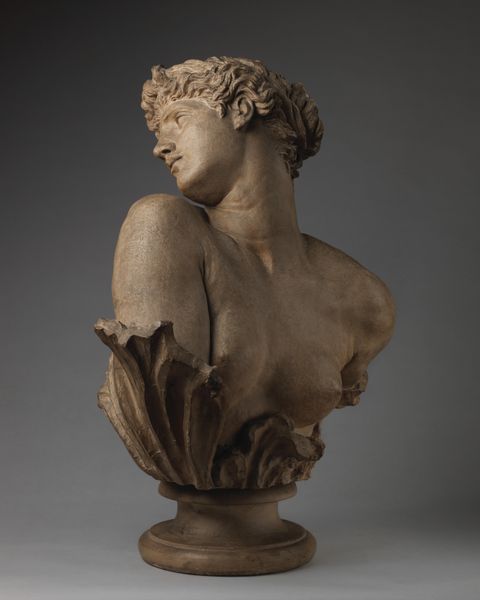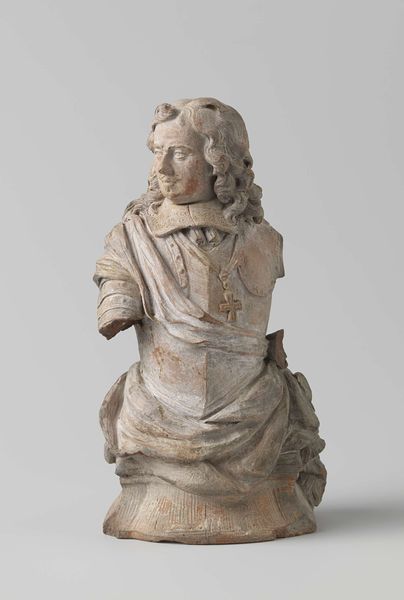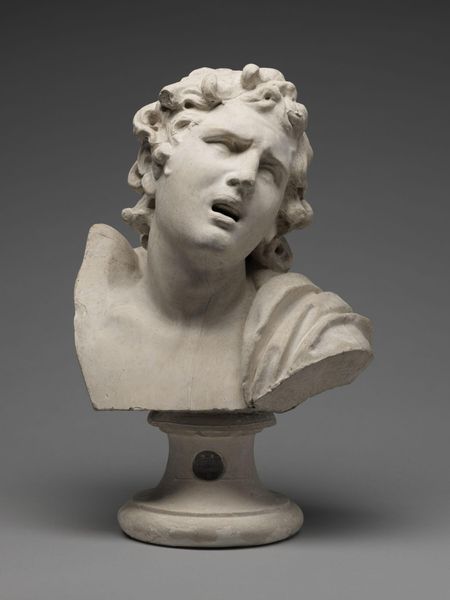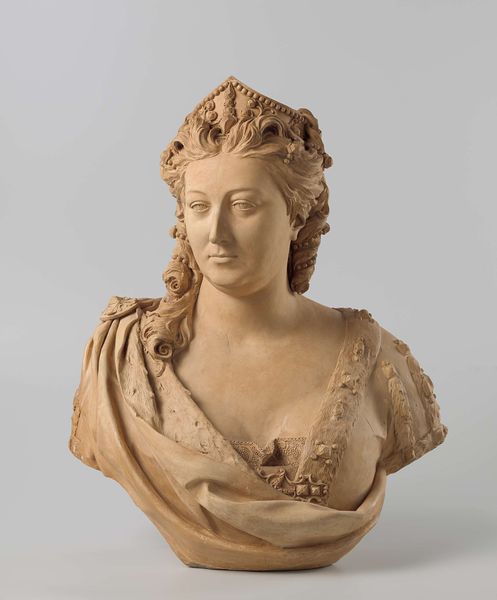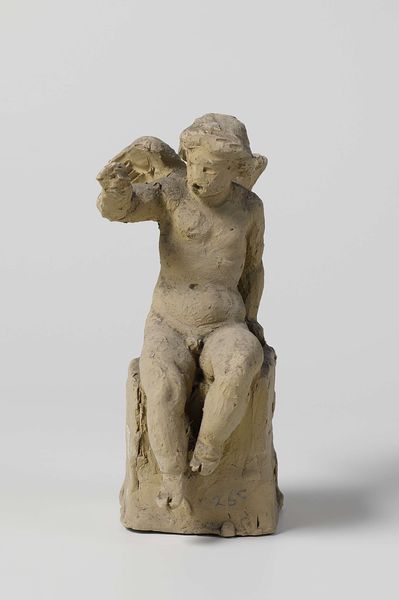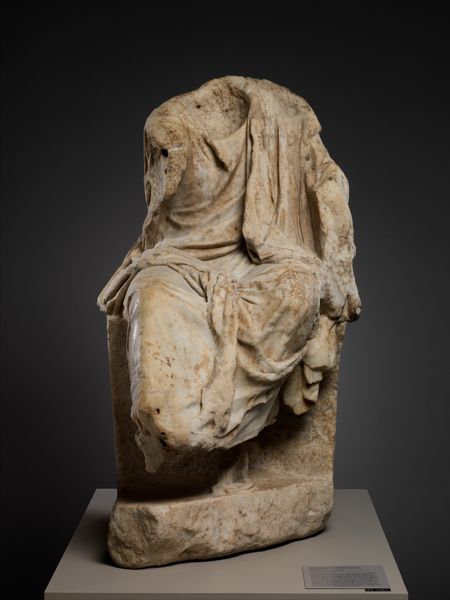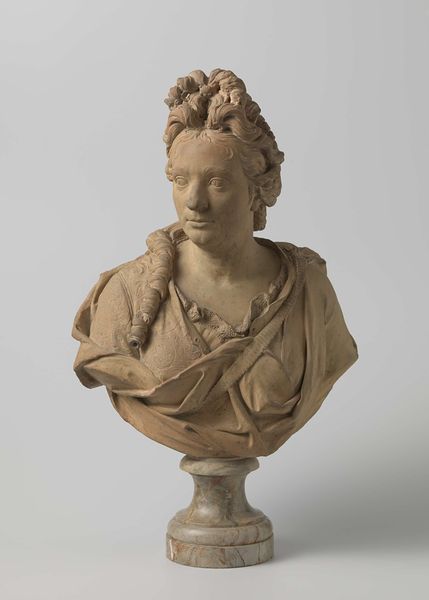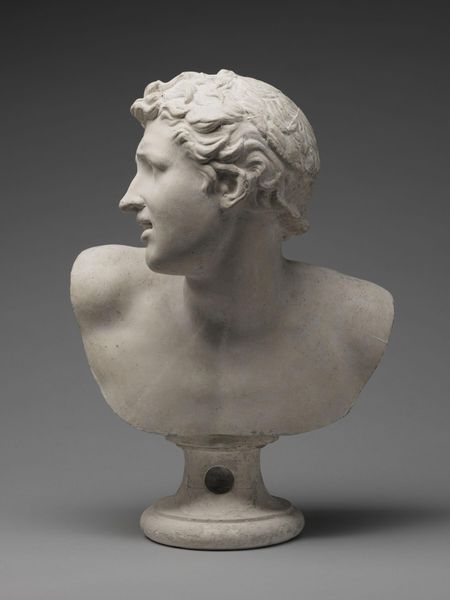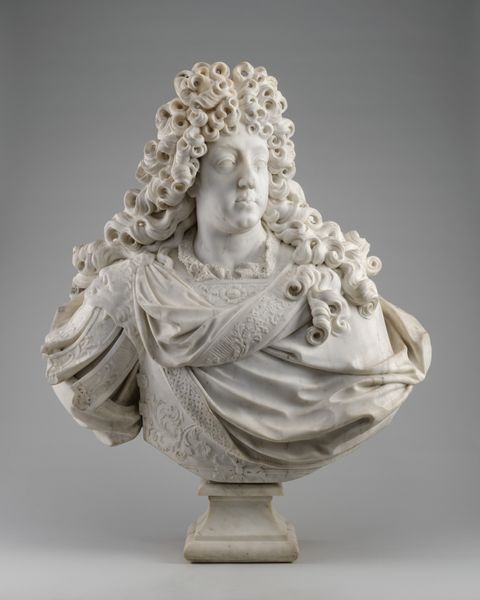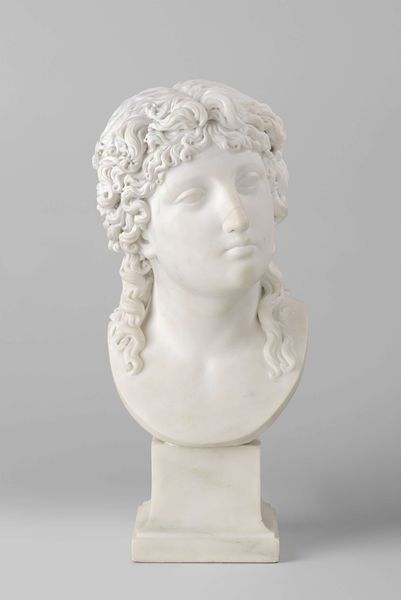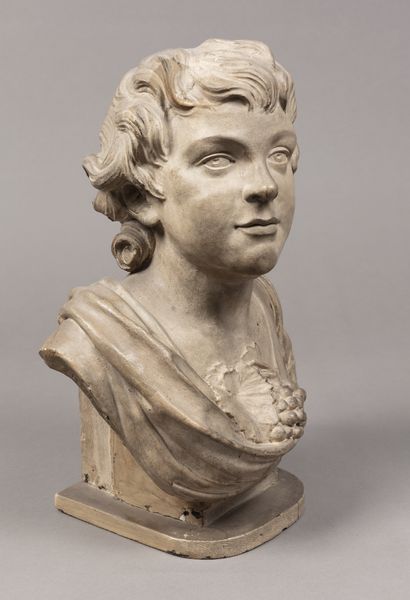
metal, sculpture
#
portrait
#
baroque
#
metal
#
sculpture
#
sculpture
Dimensions: height 40 cm, width 23.7 cm, depth 22.7 cm
Copyright: Rijks Museum: Open Domain
Curator: We're now observing Hendrick van Dieren’s "Portret van Jan Stolker (1724-1785)", crafted in 1751. The piece presents a sculpted head and shoulders on a small plinth. Editor: The first thing that hits me is the gaze, angled up and away, lost in thought. It has this strangely wistful quality despite being…stone? Metal? It doesn’t feel cold. Curator: Indeed. The sculpture is crafted in metal, and the angle of the head creates a vertical emphasis that speaks to the Baroque embrace of dynamic asymmetry, of imbalanced volumes that are so indicative of emotional power. Editor: "Emotional power" sounds dramatic, but I guess there's something theatrical about the curl of his hair and how it contrasts the relatively bare chest. Also the sort of melancholy cast about it. What sort of person was he? Or what did they want him to be seen as? Curator: Jan Stolker was, in fact, a renowned engraver, famed for his topographical and allegorical works. This upward gaze suggests an idealized view, not only toward the divine, but to higher forms of knowledge, artistic inspiration, an allegorical approach befitting a master craftsman like Stolker. Editor: I’m seeing now this idealised vision… a deliberate turning of the head away from what's present into something lofty. It almost feels as though he is avoiding any genuine emotion. Curator: One could easily argue the sculpture participates within a broader conversation of representation, exploring how even the most objective portrait attempts to imbue its subject with specific meanings beyond sheer likeness. Editor: A fine line between capturing someone, and carefully constructing a narrative about them, especially in this style. It makes me consider just how much control even someone who has their portrait created really has. Curator: A salient point! The dialectic between artist, artwork, and audience offers endless possibilities for decoding encoded assumptions. Editor: It does, doesn't it? You have to bring something to meet it halfway, to be moved, angered, or indifferent. And in the end that all boils back down to us and to that initial impression.
Comments
No comments
Be the first to comment and join the conversation on the ultimate creative platform.

